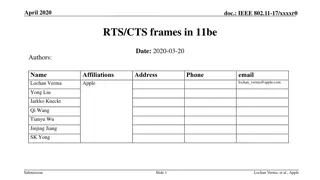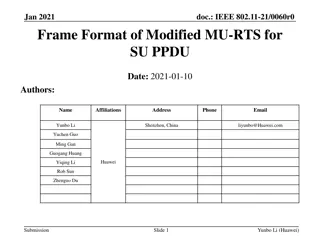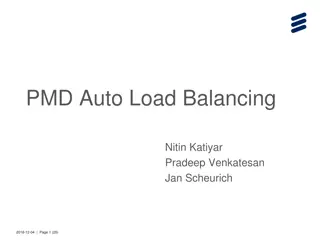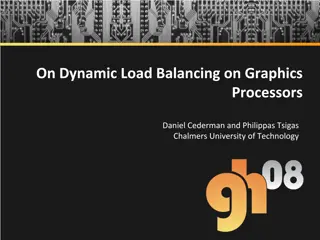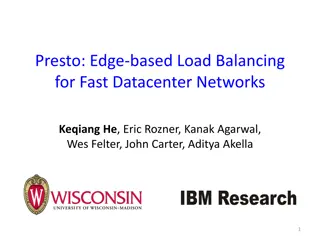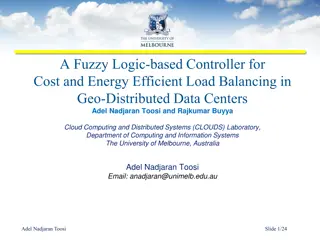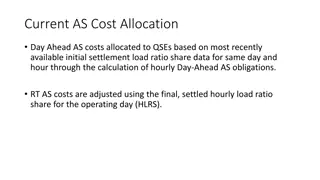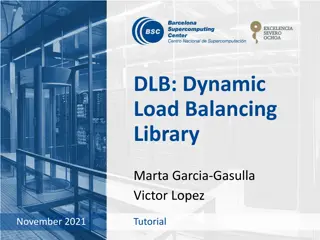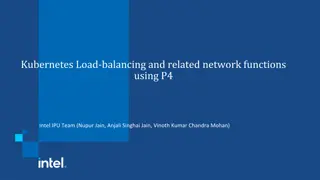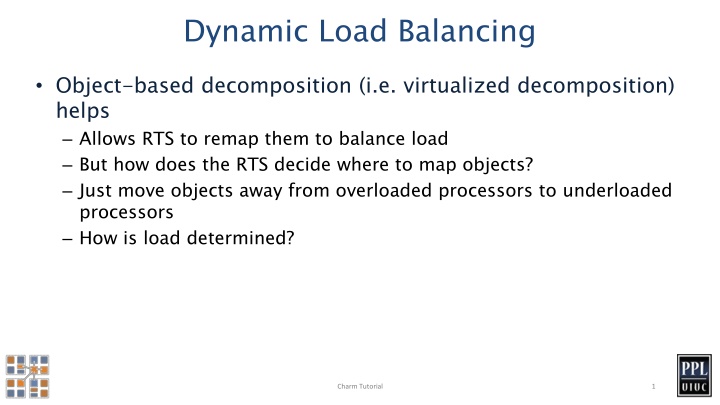
Dynamic Load Balancing Strategies in RTS
Learn about dynamic load balancing techniques in Real-Time Systems (RTS), including object-based decomposition and measurement-based principles. Explore how RTS determine load balancing, use load balancers, instrumentation, and code implementation for efficient object mapping and migration.
Download Presentation

Please find below an Image/Link to download the presentation.
The content on the website is provided AS IS for your information and personal use only. It may not be sold, licensed, or shared on other websites without obtaining consent from the author. If you encounter any issues during the download, it is possible that the publisher has removed the file from their server.
You are allowed to download the files provided on this website for personal or commercial use, subject to the condition that they are used lawfully. All files are the property of their respective owners.
The content on the website is provided AS IS for your information and personal use only. It may not be sold, licensed, or shared on other websites without obtaining consent from the author.
E N D
Presentation Transcript
Dynamic Load Balancing Object-based decomposition (i.e. virtualized decomposition) helps Allows RTS to remap them to balance load But how does the RTS decide where to map objects? Just move objects away from overloaded processors to underloaded processors How is load determined? Charm Tutorial 1
Measurement Based Load Balancing Principle of Persistence Object communication patterns and computational loads tend to persist over time In spite of dynamic behavior Abrupt but infrequent changes Slow and small changes Recent past is a good predictor of near future Runtime instrumentation Measures communication volume and computation time Measurement-based load balancers Measure load information for chares Periodically use the instrumented database to make new decisions and migrate objects Many alternative strategies can use the database Charm Tutorial 2
Using the Load Balancer Link a LB module -module <strategy> RefineLB, NeighborLB, GreedyCommLB, others EveryLB will include all load balancing strategies Compile time option (specify default balancer) -balancer RefineLB Runtime option (override default) +balancer RefineLB Charm Tutorial 3
Instrumentation By default, instrumentation is enabled Automatically collects load information Sometimes, you want LB decisions to be based only on a portion of your program To disable by default, provide runtime argument +LBOff To toggle instrumentation in code, use LBTurnInstrumentOn() and LBTurnInstrumentOff() Charm Tutorial 4
Code to Use Load Balancing Write PUP method to serialize the state of a chare Set usesAtSync = true; in chare constructor Insert AtSync() call at a natural barrier Call from every chare in all collections Does not block Implement ResumeFromSync() to resume execution A typical ResumeFromSync() contributes to a reduction Charm Tutorial 5
Example: Stencil // Synchronize at every iteration: Main starts next iteration void Main::endIter() { stencilProxy.sendBoundaries(); } // Assume a 1D Stencil chare array with near neighbor communication void Stencil::sendBoundaries() { thisProxy(wrap(x-1)).updateGhost(RIGHT, left_ghost); thisProxy(wrap(x+1)).updateGhost(LEFT, right_ghost); } void Stencil::updateGhost(int dir, double ghost) { updateBoundary(dir, ghost); if (++remoteCount == 2) { remoteCount = 0; doWork(); } } Charm Tutorial 6
Example: Stencil cont. void Stencil::doWork() { underThreshold = (computeKernel() < DELTA); if (++i % 10 == 0) { AtSync(); } // Allow load balancing every 10 iterations else { contribute(CkCallback(CkReductionTarget(Main, endIter), mainProxy)); } } void Stencil::ResumeFromSync() { contribute(CkCallback(CkReductionTarget(Main, endIter), mainProxy)); } Charm Tutorial 7






